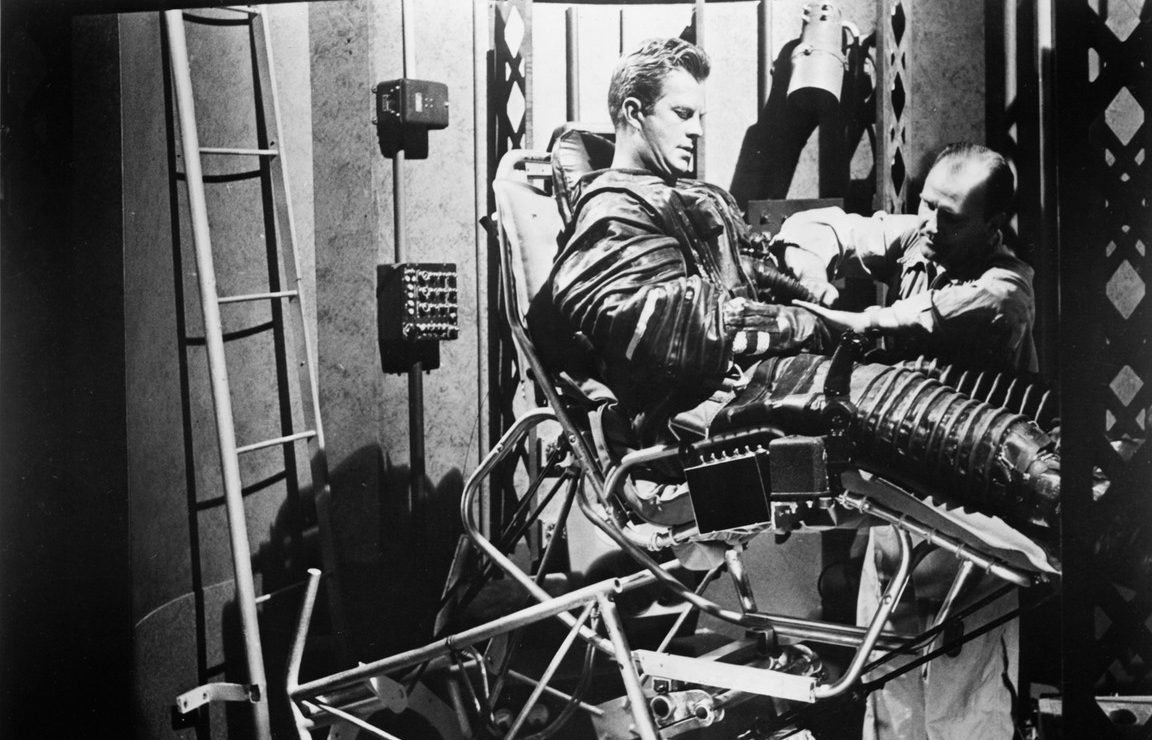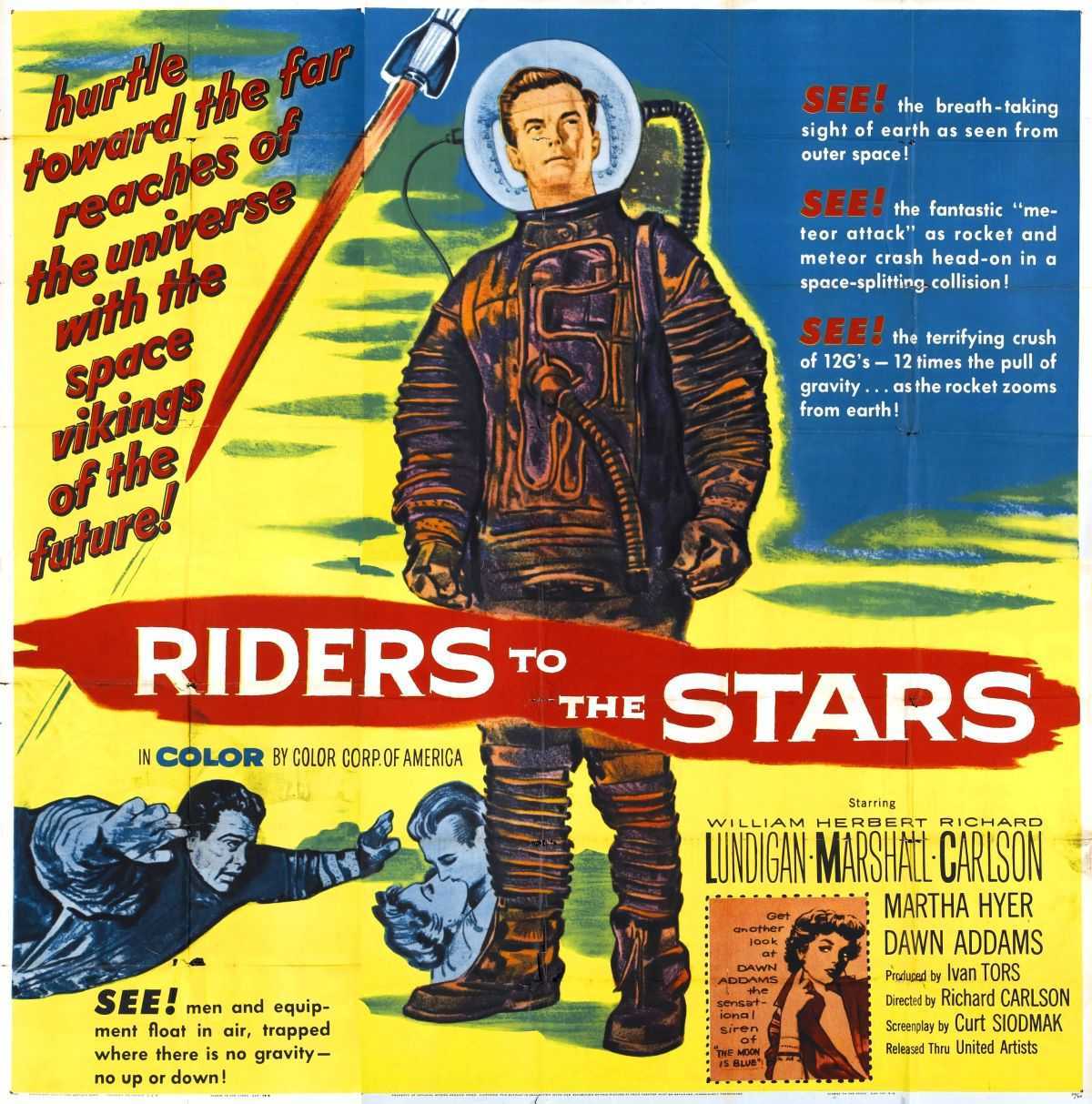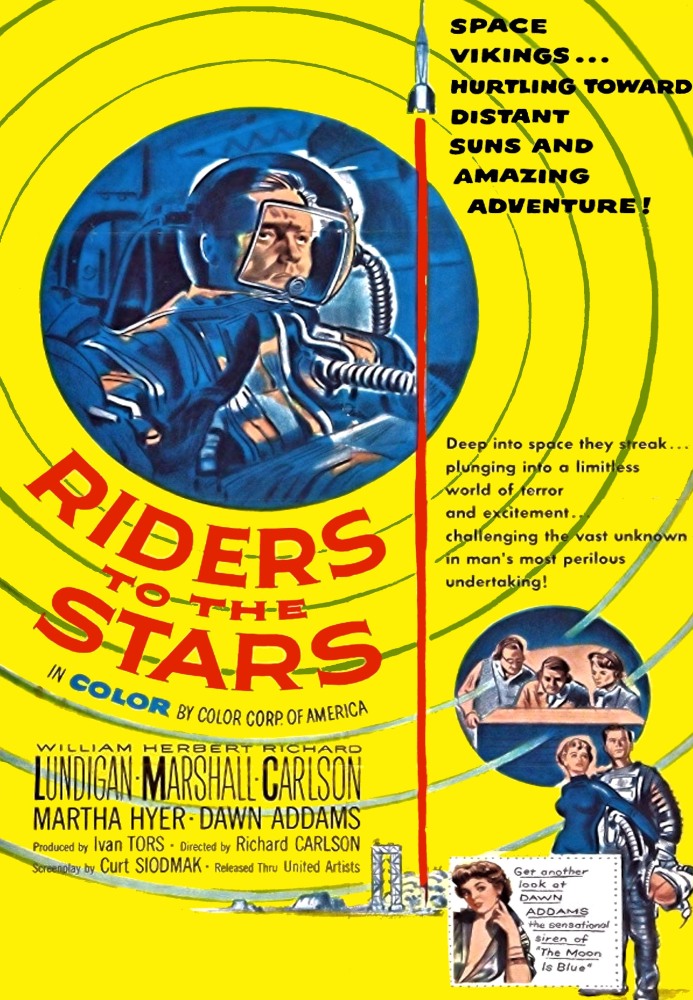Crew
Director – Richard Carlson, Screenplay – Curt Siodmak, Producer – Ivan Tors, Photography – Stanley Cortez, Music – Harry Sukman, Photographic Effects Supervisor – Jack R. Glass, Special Effects Supervisor – Harry Redmond, Art Direction – Jerome Pycha. Production Company – A Productions.
Cast
William Lundigan (Dr Richard Stratton), Martha Hyer (Jane Flynn), Richard Carlson (Dr Jerome Lockwood), Herbert Marshall (Dr Donald Stratton), Robert Karnes (Walter Gordon), George Eldredge (Dr Paul Dryden), King Donovan (James O’Herli), Lawrence Dobkin (Dr Delmar), Dawn Addams (Susan Manners)
Plot
A group of scientists are selected by computer and brought together under utmost secrecy at the Snake Mountain Air Force Base by the Office of Scientific Investigation. There they are subjected to a series of grueling tests. It is then revealed that they are being sought for selection as astronauts. Three finally make it through to be selected. As the launch is readied, it is revealed that their mission is to go up into orbit and use their rocketships to scoop up meteorites so that the ultra-dense material formed in space can be used as a hard radiation shields for future space missions.
Riders to the Stars was one of a handful of science-fiction films produced by Ivan Tors in the 1950s. Tors also produced Around the World Under the Sea (1966) and several science-fiction tv series including Science Fiction Theatre (1955-7) and Men into Space (1959), before going onto make his name as the producer of various nature-related series such as Sea Hunt (1958-60), Flipper (1964-8), Daktari (1966-9) and Gentle Ben (1967-9).
Among his earliest films, Tors produced a trilogy of science-fiction films set around the fictional Office of Scientific Investigation consisting of The Magnetic Monster (1953), Riders to the Stars and Gog (1954), concerning the A-Men, the equivalent of the FBI dealing with scientific menaces and discoveries.
Tors’ choice of director here was actor Richard Carlson, who had previously come to genre notice with It Came from Outer Space (1953) and had played the lead A-Man in Tors’ The Magnetic Monster. The script was from Curt Siodmak, a German immigrant who became a prolific writer of B genre movies in the previous decade,including authoring the oft-filmed novel Donovan’s Brain (1942). (See below for Curt Siodmak’s other genre credits).

Riders to the Stars was one of a group of films in the 1950s that were fascinated with the possibility of travel into space. The way was paved by the landmark Destination Moon (1950), which started the whole so-called ‘Golden Age of Science Fiction’ off with an extraordinary optimism. The genre was subsequently almost entirely overwhelmed by menaces threatening it (alien invaders, atomic monsters) and seemed to lack the boldness of vision to conquer space that Destination Moon once saw as eminently within its grasp. The few ventures that did occur were invariably seen, as here, as something that could only be won at the cost of superhuman effort and life. Symbolically, it seemed that making the conceptual leap out there was so Herculean as to almost be beyond humanity’s power.
Riders to the Stars is a fascinating effort. Modern genre reviewers (John Brosnan, The Aurum Film Encyclopedia: Science Fiction) treat it contemptuously, principally for its nonsensical basic premise of sending up rockets to capture meteorites in the belief that meteorites are created out of a super-dense material that will be able to withstand the harshness of space. However, the only real errors here are metallurgical ones. There is nothing too much else in the film that falls outside the realms of at least possibility.
One should not be too hard on it – after all, it was only trying to imagine the nature of spaceflight when such never existed. It is an easy film to be scathing about in the hindsight of the Space Mission but one must also remember that only a couple of years later most of the US’s attempts to launch rockets into space ended up with some 60 of them exploding on the launch pad, so clearly not even anybody in the real world had too many clues about what the right way of doing things was either.

Nevertheless, Riders to the Stars makes interesting comparisons to the real Apollo mission – the space launch here is prepared in the space of two weeks rather than several years; all the tests and what the scientists are trying to achieve are conducted by keeping the astronauts fairly much in the dark as to what is happening; and there is very little trial and error, just a great leap into the dark without the certainty it will work.
Certainly, Riders to the Stars is made with an absolute conviction in itself. Richard Carlson directs with a sense of almost documentary-like realism. He has, for example, gone and shot in a real centrifuge, cuts in real rocket launch footage and seems to be using real scientific equipment in the background, which is notable over the usual flashing lights that stand in for equipment in the science-fiction of the same era. Subsequent to the launch though, the film becomes less effective through the replacement of the aforementioned realism with far less convincing model rockets. Nevertheless, Carlson compensates by cutting back and forward to the technical detail of the mission and creating some captivating scenes with Robert Karnes flipping out under pressure and going flying about the cabin.
Screenwriter Curt Siodmak was a German native who had worked as a novelist and began writing scripts in Germany with the science-fiction film F.P.1 Does Not Answer (1932). Siodmak and his brother Robert (later to become a director) fled to the US with the rise of the Nazis. Curt Siodmak’s other genre scripts include Trans-Atlantic Tunnel (1935), The Ape (1940), Black Friday (1940), The Invisible Man Returns (1940), The Invisible Woman (1940), The Wolf Man (1941), Invisible Agent (1942), Frankenstein Meets the Wolf Man (1943), I Walked with a Zombie (1943), Son of Dracula (1943), The Climax (1944), House of Frankenstein (1944), The Beast with Five Fingers (1946), Tarzan’s Magic Fountain (1949), Creature with the Atom Brain (1955) and Earth Vs the Flying Saucers (1956). He also directed/wrote several films with Bride of the Gorilla (1951), The Magnetic Monster (1953), Curucu, Beast of the Amazon (1956) and Love Slaves of the Amazon (1957). Siodmak also wrote the classic novel Donovan’s Brain (1942) about a millionaire’s disembodied brain that ends up mentally controlling the scientist that removed it, which has been thrice filmed as The Lady and the Monster (1944), Donovan’s Brain (1953) and Vengeance/The Brain (1962). Siodmak’s lesser known follow-up Hauser’s Memory (1968) about transplanted memories was also filmed as the tv movie Hauser’s Memory (1970).


